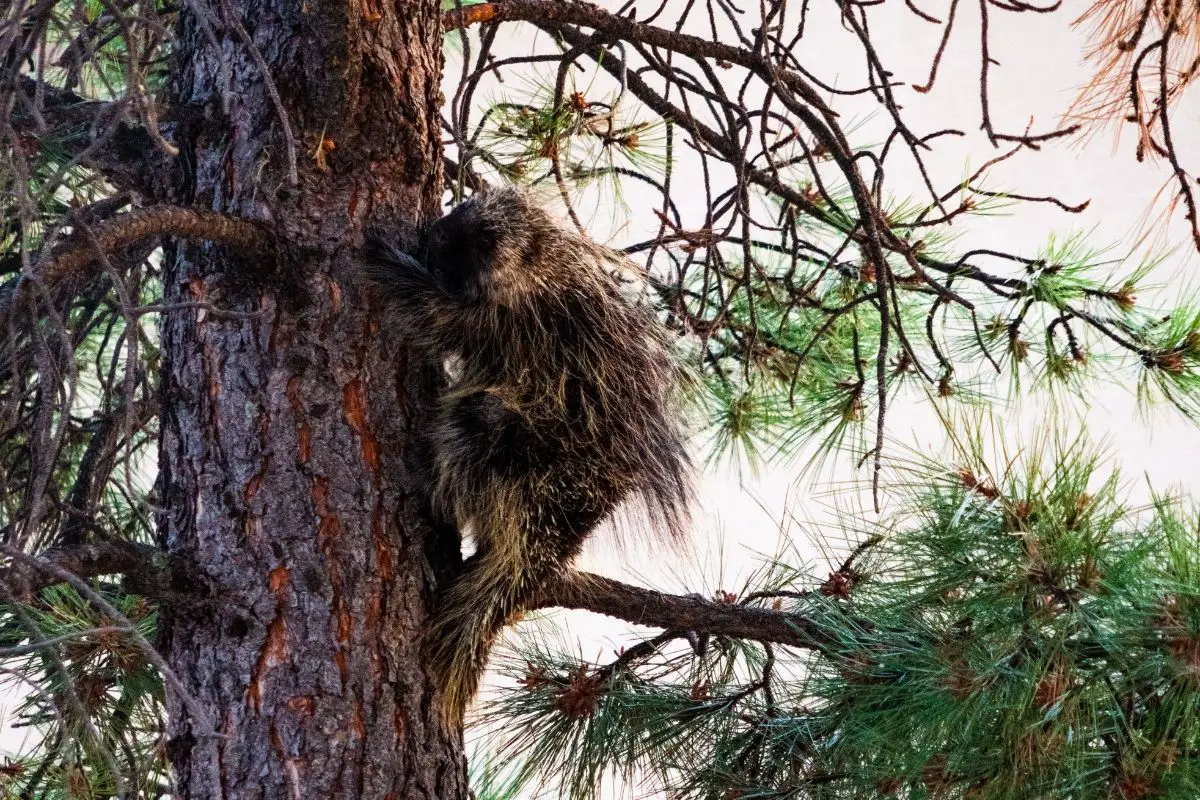Porcupines are best known for the long, sharp quills they use for defense against predators. Up to 30,000 of these hollow-point weapons cover the North American porcupine. While they can’t shoot their quills, they do have some superpowers: porcupines can swim, sing, dance, and yes, even climb trees!
What is a porcupine?
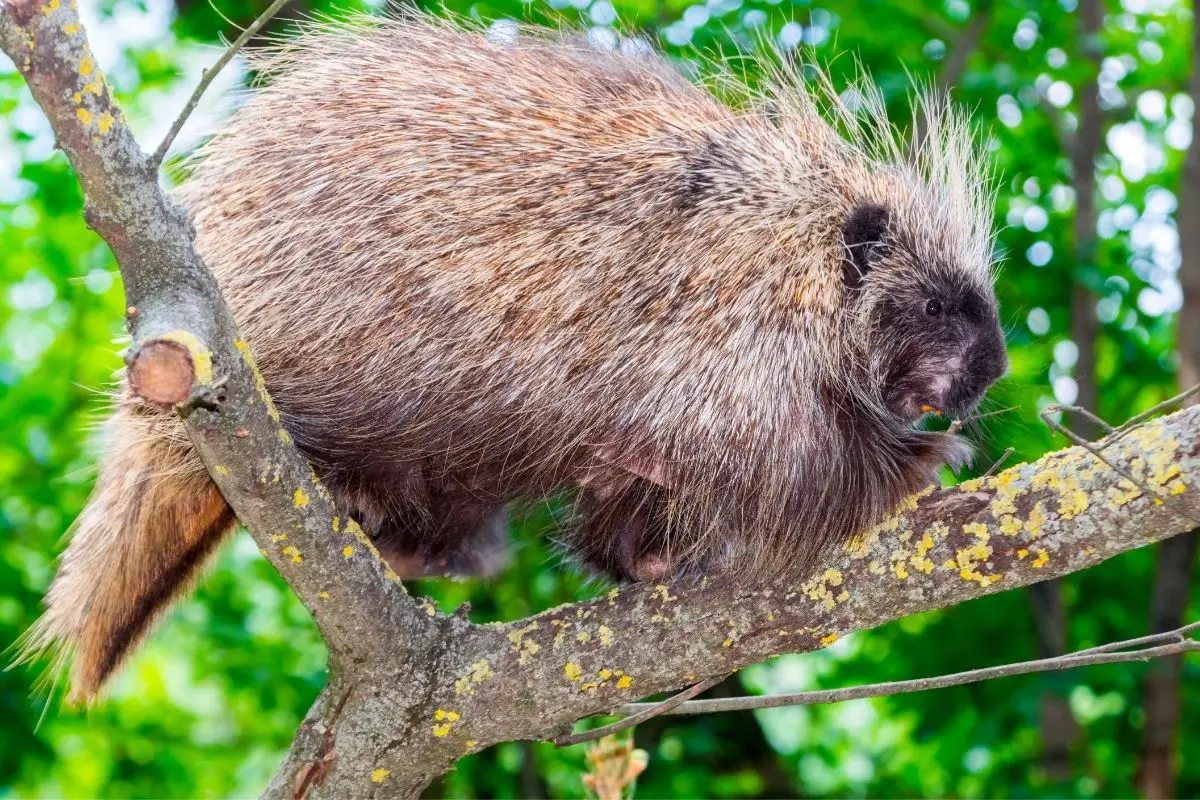
Odds are you know the silhouette of this iconic creature. Perhaps you’ve also heard that it’s name means “thorny pig.” But did you know that it’s actually the second largest member of the rodent family?
(The number one title belongs to…the beaver!). Porcupines can grow to be two to three feet long and weigh more than 20 pounds! A thick cover of quills, made of keratin like our hair or fingernails, covers their backs.
They also have sharp claws on both their front and hind legs that are excellent for climbing. Their strong, prehensile tails can also be used to stabilize their bodies and even to grip branches as they climb!
What do porcupines eat?
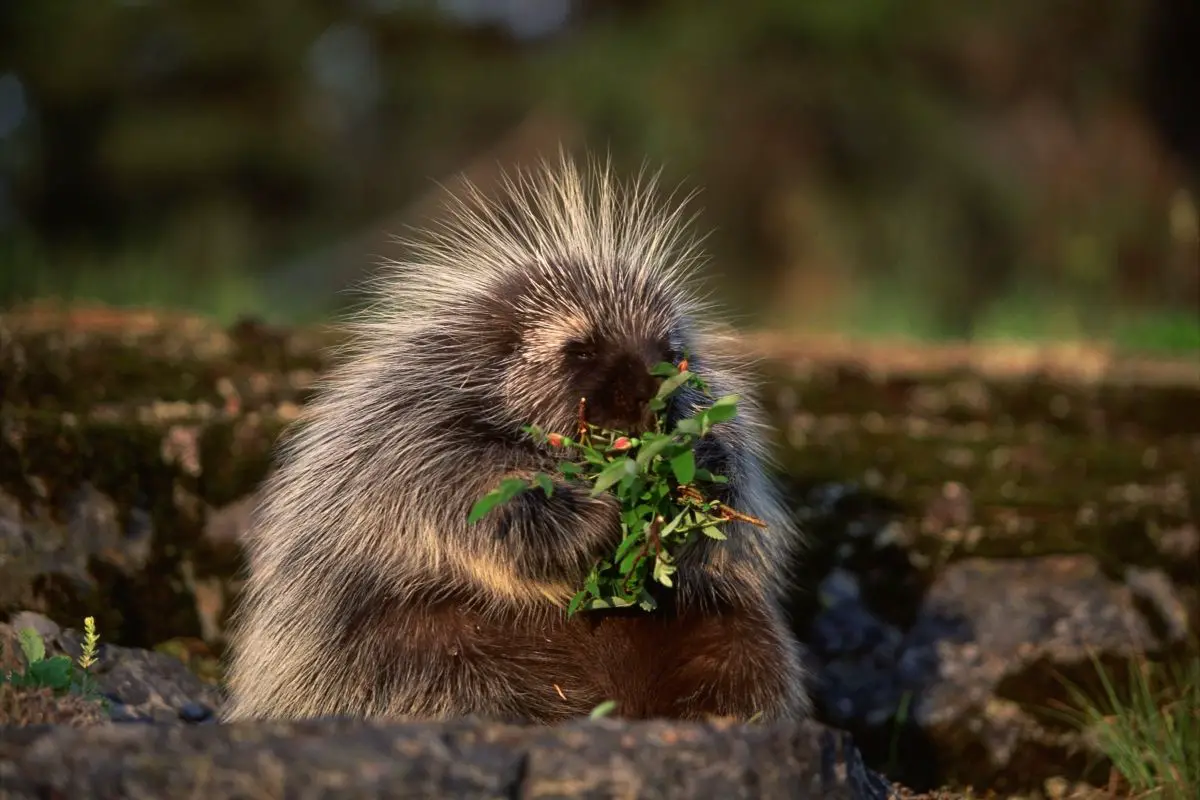
Porcupines are herbivores, and consume a wide range of plant parts, from nuts, seeds, and fruits to leaves, grasses, roots, and stems. The low-slung, lumbering porcupine struggles to navigate the deep snow in winter, so tree climbing is a useful skill for finding food. Evergreen trees are a favorite snack, and porcupines will eat the bark, twigs, buds, and needles.
In fact, porcupines can feed so heavily on a single tree that they destroy it (which is not so great if the tree is in your yard!) “Hello, critter control? I have a porcupine infestation!”
Joking aside, a desire for salt in their diet can lead porcupines to munch on wooden tool handles and canoe paddles that have picked up salt from sweaty hands. Porcupines will even gnaw on outhouses because of the salt content in urine.
Where do porcupines live?
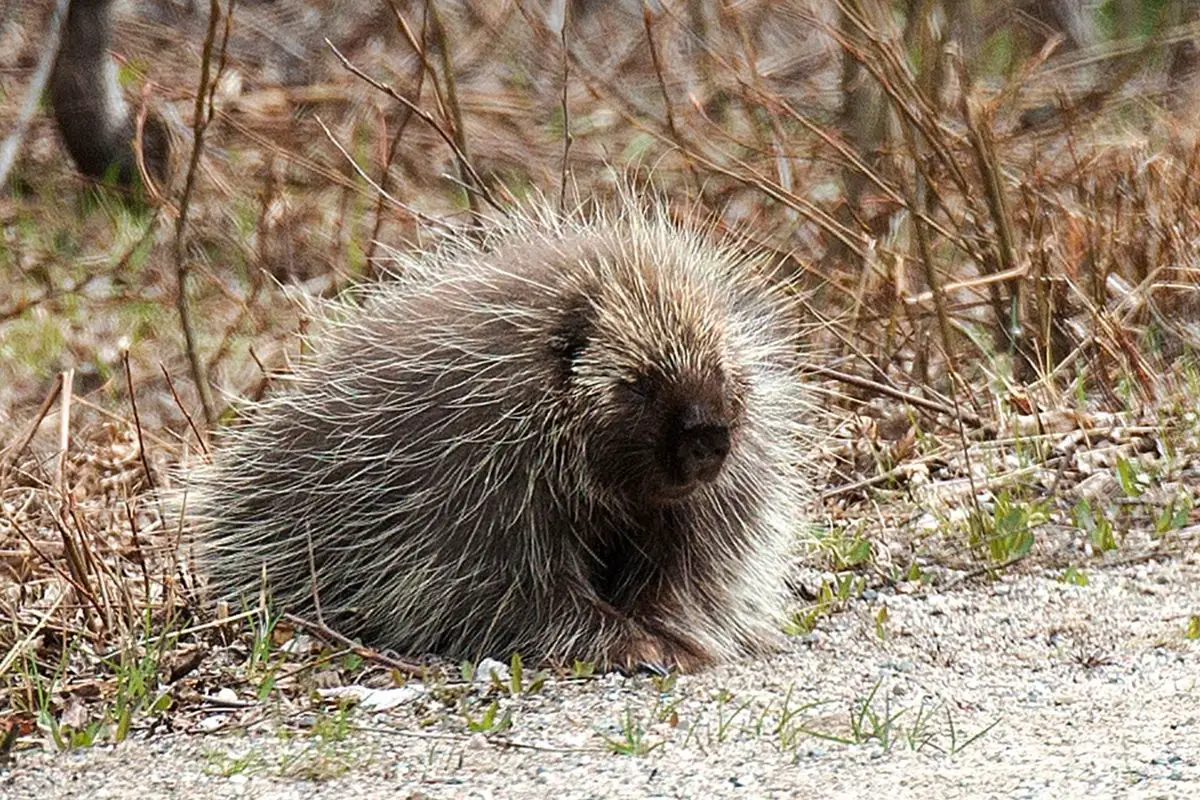
There are 29 porcupine species living across the globe, but only one that lives in North America (territorial much?). Despite this, porcupines are social creatures: a group of them is called (appropriately enough) a prickle.
From Mexico and the Northeastern and Western United States all the way up through Canada to Alaska, the North American porcupine inhabits forests, deserts, and even tundra.
Porcupine’s strong legs, broad backs, and large tails make them excellent swimmers, and their hollow quills provide natural floatation. These quills, which can take on a greenish color, also blend in among the evergreen needles. In fact, porcupines of the forest often build their nests in trees.
How do porcupines reproduce?
Very carefully J. But seriously, porcupine courtship is elaborate! The male porcupine woos the female with elaborate songs, performs a complicated mating dance, and even showers her with gifts…of urine. This epistle, usually sent from a lower branch of her tree, serves as an invitation (a love letter, if you will?).
If she’s not interested, she will scream, shake her tail at him, and run away. But if she’s charmed, the porcupine couple will mate for life. And yes, they can flatten their quills for cuddling.
Female porcupines gestate for nine months and give birth in spring to babies called…porcupettes!
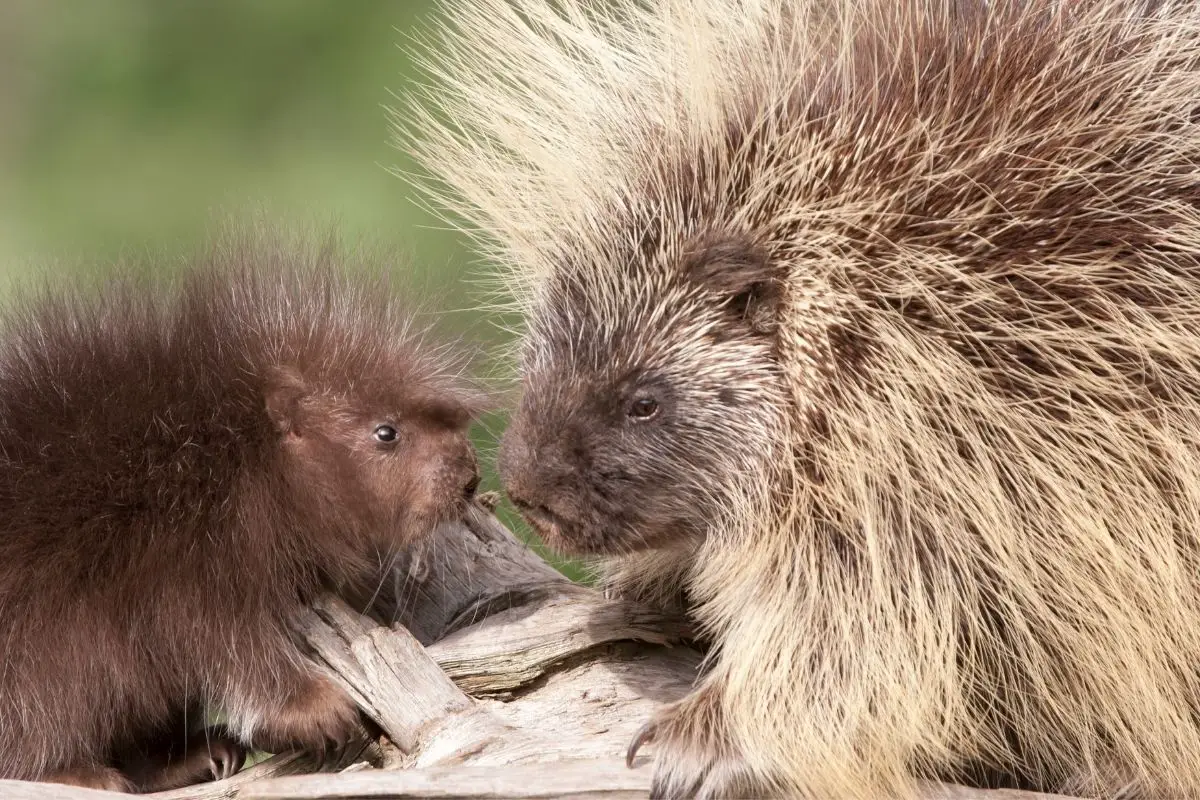
What threatens porcupines survival?
Porcupines have few regular predators because of their excellent defense: a protective layer of 30,000 barbed quills. As some pet owners know, these wicked hooks can fall out and remain lodged in the face of an unwitting dog that tries to take a sniff. But most animals avoid the prickly porcupine, which warns off predators first with a strong odor, then with loud vocalizations, and finally by squeezing its back muscles to make the quills stand out.
Their most common attackers are…other porcupines. Males engage in vicious courtship battles that can leave them scarred. These battles take place in trees as a male stands guard over his intended mate.
Accordingly, fights can also result in a dangerous fall. Can porcupines be pricked by their own quills? The answer is yes!
This may be why, despite their nasty barbs, porcupine quills are also tipped with antibiotics. Some predators will occasionally brave the quills to take down a porcupine: owls, wolves, coyotes, mountain lions, and bobcats. The one creature that regularly preys on porcupines is the fisher, a large weasel relative that is also (like the porcupine) an agile tree climber.
Fishers attack porcupines in trees to get them to fall or flee, and then use their agility to circle and strike until they are successful. Because fishers are the only consistent natural predator of porcupines, humans have even introduced them to forests to control porcupine populations.
As usual, the greatest threat to porcupines is humans, who have hunted them for food and treated them as pests.
It’s no wonder porcupines feel a bit prickly toward us!

